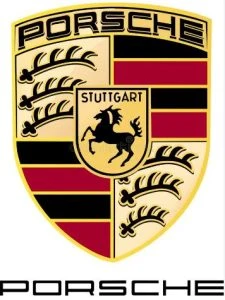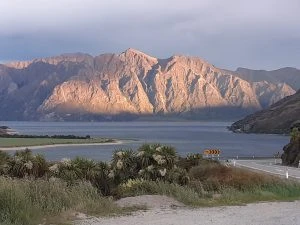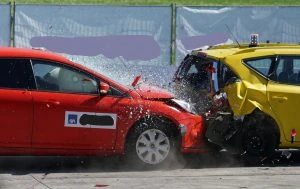Porsche’s six-stroke engine

Who loves a good internal combustion engine (ICE)? Confession time would have me say that I still love the special characteristics of an ICE and the awesome soundtracks that they can make – none being more special than a sonorous and legendary V8 or even a fully vocal high-pitched straight six.
Now there is news in the hood that Porsche has patented some new technology whereby the introduction of a six-stroke cycle for an ICE of theirs will be made. The common four-stroke cycle that is already used by almost every auto manufacturer, including Porsche, has four strokes: intake, compression, ignition, and exhaust. Porsche states that the six-stroke cycle will make considerable gains in power output while also lowering its levels of emissions. This is great news for ICE fans.
Tips For Your NZ Road Trip Holiday: the South Island

Having just last week raved about some great road trips to take in the North Island of New Zealand, we can’t forget the South Island, can we? For many, the South Island has some of the best spectacular scenery that this small country has to offer in a country that is situated in the Pacific Ocean, a little more isolated than you might first have thought (yes, even more than Australia – Australia doesn’t often get left off world maps). The South Island is situated at just about the bottom of the world and is full of mountains, rivers, and lakes, and home to some of the best sea creatures, sea views, and birdlife you’ll see anywhere on the planet – well, that’s my opinion.
One of the best ways to see the South Island, if you want to do a one-off hit, is to fly directly into Queenstown. Despite barely qualifying as a city, Queenstown is an international airport and so takes a lot of direct flights to and from the main Australian centres. If you want to add a South Island trip to a North Island trip as well, then the Cook Strait is an easy sea connection between the two main islands. Ferries run the route between Picton and Wellington daily, so these are an easy way to bridge the gap between the islands (book first). Simply drive onto the boat at one end and drive off at the other.
Planning A Kiwi Road Trip? Some of the Best Bits of the North Island

We need to admit that our mates across the ditch have a nice back yard in which they can play, and New Zealand (pronounced “Nuzilin”) isn’t that far away. And it’s a good place for a road trip. There are not too many things which can bite you, or, if they do, you’re unlikely to die from them. So, what does New Zealand have to offer?
Having spent a bit of time in both the North and the South Islands, I’ve come across some spectacular places to go see and experience. The warmer of the two islands is the North, but that doesn’t mean that there won’t be a cool breeze or a bit of rain scampering up from the south every now and then.
ANCAP Updates

There have been recent changes to the tests at the Australasian New Car Assessment Program (ANCAP). The new vehicles making their way to our showroom floors are more complicated and go beyond merely being a tool for getting you from one point on the map to another. There are many technologies that we are familiar with now that weren’t available on many cars even a couple of decades ago. Most of us will know what a seatbelt is, and what ABS and ESC do, and that our cars have airbags. Seatbelts have been common in cars since the seventies, while the other two features have been common since the early 2000s. Even as far back as the nineties, you’d slip yourself into a Saab 9000, any BMW, or Honda Legend and there would be a logo on a dash panel or steering wheel saying that behind this was an airbag at the ready. Anti-lock braking technology, commonly known anti-brake skid (ABS), continued to become more sophisticated and reliable throughout the 1980s. By the early 1990s, ABS was a standard feature in many new vehicles and was considered pretty cool and a lifesaver in the wet. Electronic stability control (ESC) was also a pretty big game-changer in terms of the way a vehicle could be kept in line and pointing in the right direction when any hint of wheel skid was detected. ESC and ABS were linked into the same system.
Today, ESC and ABS have all sorts of extra electronic wizardry around them that can tell these features to engage into action quickly. You think of all the camera technology, and laser and sonar technology that can detect how far the back end of a bus is away from the nose of your vehicle, which just happens to be catapulting towards the bus far too fast. These onboard systems have been designed to detect the situation and engage the braking systems (ABS and ESC) in a timely fashion in order to stop an accident from occurring. This wizardry is now looking out for other road users’ safety as well as your own as you guide the vehicle from the driver’s seat. New vehicles can now keep themselves inside their own lane, should you happen to become distracted. The systems will even detect an incoming pedestrian that has decided it’s a great idea to drink far too much alcohol at the pub and then stagger home across a busy street without using the traffic light crossing at night. (On a more serious note, this sort of drunken decision can be fatal – when I was in high school, a friend of mine hit a drunk in black clothes who ran in front of her car on a wet night when she was on her P-plates. Witnesses were there to tell the cops that there was no way she could have seen him coming or braked in time, so she didn’t face consequences for manslaughter, but she was traumatized, as you can imagine.)